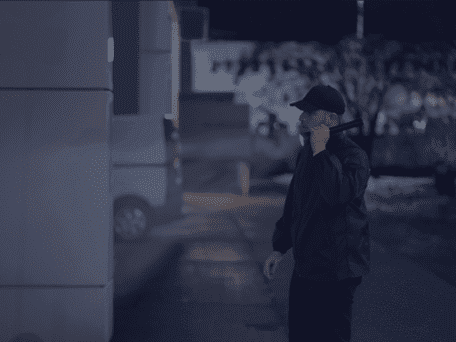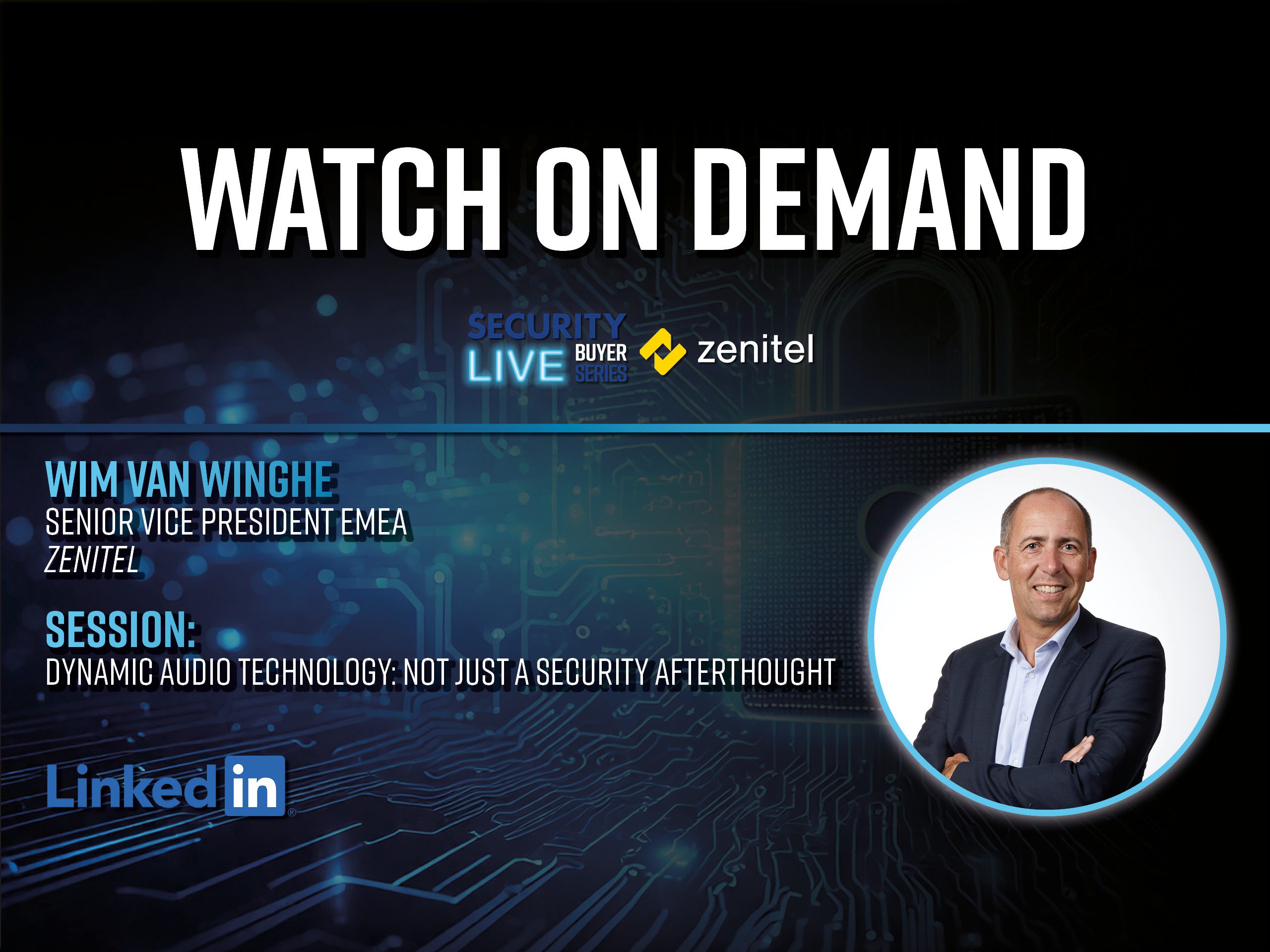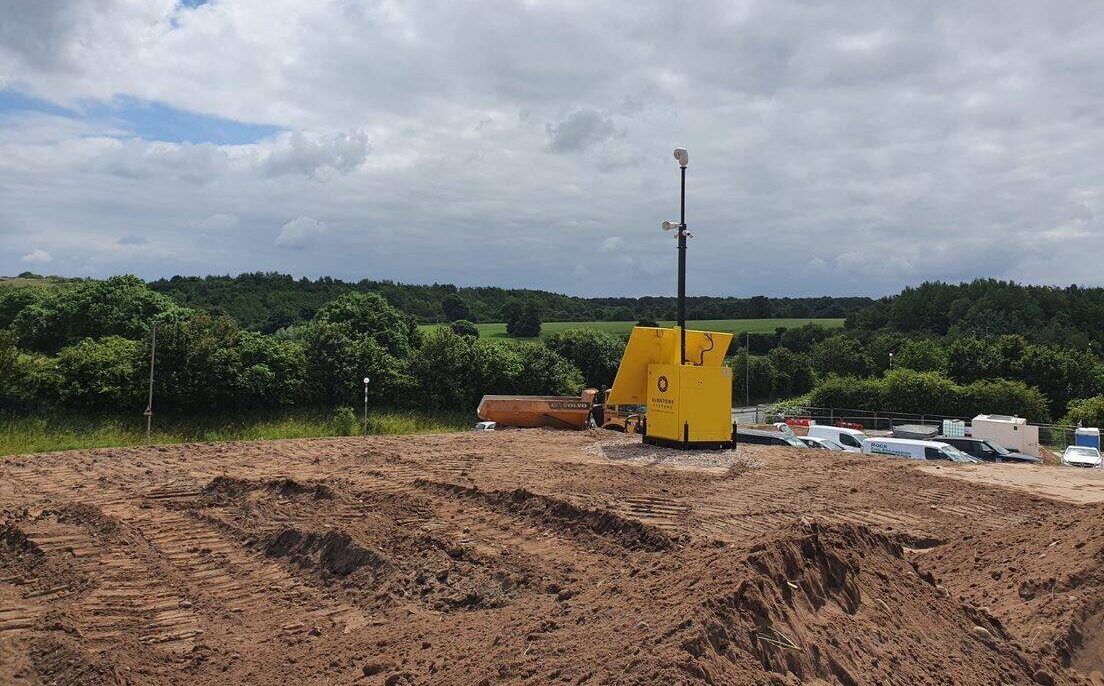
Around 120 delegates attended the Surveillance Camera Commissioner’s conference in London last week to hear about and discuss the latest developments around the commissioner’s new code of practice.
The event was held at the Royal Society in central London and was opened by the commissioner Andrew Rennison who, after introducing the day’s speakers, called for delegates to help promote the Surveillance Camera Code of Practice to the CCTV industry.
Borrowing a word from Lord Taylor of Holbeach, the Parliamentary Under Secretary of State for Criminal Information at the Home Office, Rennison asked people to go forth and “evangelise” the code.
He said it was an approach that had worked during his six years as the Forensic Science Regulator, and it was on the back of this success that the Home Office had asked him to become the interim CCTV regulator (later to become the surveillance camera commissioner).
Evangelising the code is necessary because, of course, the code is not mandatory and, as it only applies to systems owned by local authorities and the police, covers less than five per cent of CCTV systems in England and Wales.

And while relevant authorities have been told they must have regard to the 12 guiding principles of the code, there are no penalties for failing to observe it.
Compliance is entirely voluntary for the rest of the CCTV industry, with operators of surveillance systems being “encouraged to adopt this code and its guiding principles”.
Rennison conceded that critics of the code were correct that the code had no provisions for enforcement, but that Home Office ministers were hopeful that the guiding principles would be adopted voluntarily. Although central government is not covered by the code, the Home Office itself is one organisation that has voluntarily adopted it.
He also conceded that the code lacked measurement criteria and that in future he hoped to emulate the Forensic Science code of practice by adopting validation procedures, especially where CCTV is used in a forensic capacity.
CCTV focus
The commissioner then introduced the minister, Lord Taylor, who opened with the observation that the scope of the Surveillance Camera code of practice extended beyond just CCTV to cover aerial drones, body worn cameras, video analytics and, most significantly, automated number plate recognition (ANPR).

Nonetheless, his focus was primarily on CCTV which he credited with helping to achieve year on year reductions in recorded crime. Surveillance cameras in public and private areas have captured good quality images which have helped protect property, investigate crime and secure justice for victims of crime.
He quoted Synectic’s recent survey of public attitudes to CCTV, which demonstrated that 70 per cent of the public feel safer because of CCTV and 62 per cent would like to see more cameras in public spaces.
However, he cautioned that public support for CCTV is not unconditional and that a significant number of survey respondents were concerned about the invasion of privacy by surveillance devices.
And he warned that government support for CCTV is not unconditional either; questions must be asked of each and every CCTV system as to whether it’s being used for legitimate purposes and for a pressing need. Are the public given enough information about these systems and has the system been effective in its stated purpose?
Echoing a phrase often heard from Andrew Rennison, he said the industry must adopt an ethos of “surveillance by consent” in much the same way that the police operate under the ethos of “policing by consent”, a philosophy pioneered by Robert Peel, the Victorian founder of modern policing.
Like Rennison, Lord Taylor was keen to address criticisms of the code and the Protection of Freedoms Act 2012 under which it was implemented, namely that the scope of the code is too narrow.
CCTV is a complex area encompassing technology, crime, policing, social policy, human rights and privacy, he said. By taking an incremental approach to regulation, the government believes they can resolve complex issues while dealing with a relatively small number of stakeholders before rolling it out to the wider CCTV industry.
Another critique is that the code doesn’t cover privately owned systems. Why not? Lord Taylor said that while the vast majority of video surveillance systems are privately owned, making compliance mandatory at this stage would be a regulatory burden, but the government has asked the commissioner to report back in 2015 on how widely the code has been implemented by those organisations which voluntarily adopt it.
However, in 2015, Andrew Rennison will no longer be in post as he has decided to pursue other options, Lord Taylor said. The Home Office will advertise for a replacement in a few weeks, and Lord Taylor promised that it would be a truly open selection process. He encouraged people from the CCTV industry to consider applying for the job.
He said the new commissioner would need to have the intellectual capability to analyse and explain a rapidly changing and complex industry, and be someone who would be an evangelist for the code of practice, persuading and cajoling the CCTV industry to voluntarily adopt it.
Codes of practice

Because of the involvement of two commissioners in regulating CCTV, there are two relevant codes of practice for operators to refer to: the Surveillance Camera Commissioner’s code, which is voluntary, and the Information Commissioner’s code of practice which carries the potential for significant fines for breaching it.
To explain the Surveillance Camera code of practice, the next speaker was the man who drafted much of the code – Alastair Thomas, the policy lead for the Surveillance Camera Commissioner.
Thomas outlined the 12 principles contained in the code and gave examples of what they meant in practice. For the sake of brevity, and because the code is readily available online, we won’t go into the details of his speech in this article.
For details of the 12 principles of regulation, see the code of practice.
And following Thomas was Jonathan Bamford, head of strategic liaison at the Information Commissioner’s Office who talked about “Helping ensure effective regulation – the role of the Information Commissioner”.

He was particularly keen to emphasise that there is no conflict or overlap between the Surveillance Camera Commissioner and the Information Commissioner, despite the fact that they both have an interest in regulating CCTV and both have produced a code of practice to cover video surveillance.
To that end, he outlined the responsibilities of the two commissioners.
Surveillance Camera Commissioner role:
- Review, encourage and monitor compliance
- No direct enforcement/complaint handling functions
- Provides an annual report to the secretary of state
Information Commissioner role:
- Encourages and can monitor compliance with Data Protection Act
- Handles complaints
- Can take enforcement action and prosecute
- Can impose penalties of up to £500,000
- Issues guidance including the code of practice
- Accountable to Parliament
There is, he says, no extra burden placed on CCTV systems just because there are two regulators – as he said, if you are in compliance with the Surveillance Camera Commissioner’s code of practice, then you have gone a long way to complying with the ICO’s code.
The ICO is currently updating its code to dovetail more closely with the surveillance camera code and to take account of developments in technology such as aerial drones.
He also warned councils that the ICO was taking an interest in the use of CCTV for issuing penalty charge notices for traffic offences. They are currently taking action against a local authority on the grounds that PCNs have not been shown to have an effect in actually reducing the incidence of traffic violations. As he said, it doesn’t appear to be working because despite issuing thousands of PCNs, councils continue to catch motorists in box junctions.
View the PowerPoint slides from Bamford’s presentation here.

FAQs
Bamford’s speech was followed by a question and answer session.
To pick up just one of the questions, Danny Oldman of Manchester City Council asked, if a camera is put in for a specific purpose, and you achieve that purpose, do you need to remove the camera or can you keep it there?
Rennison put the question back to him: what would be the justification for keeping it there?
Oldman replied, if you remove it, crime might go back up.
Rennison replied that he would want to see the evidence that cameras prevent crime in that area.
Alastair Thomas said that Paul Crowther, the ACPO lead on CCTV, is wrestling with this question. If crime has gone away from that location, and you take away the camera, and then a serious crime occurs or anti-social behaviour goes up again, were you justified in removing that camera in the first place? More clarity is needed on the precise contribution that cameras make to crime prevention.
And he added, perhaps it’s about making CCTV systems more agile by using redeployable cameras.
Lord Taylor replied to the question by saying, if we are going to reduce proliferation, we need management systems to help us better evaluate systems.
One of the principle reasons that CCTV works is because it has a deterrent value, but there is a problem with displacement to non-surveilled areas. At a meeting with local authority representatives at the Conservative Party conference, he discussed this exact problem, with local authorities complaining that areas adjacent to areas of high surveillance often saw an increase in anti-social behaviour.
Jonathan Bamford said that it is difficult to know when to decommission a camera. However, there needs to be a recognition that as cities change, patterns of crime evolve as well, which can leave cameras looking out over areas where nothing untoward really happens anymore.
He suggested that system owners could cut the hours of operation, to reduce the impact on privacy, or cameras could be removed on a trial basis.
Andrew Rennison exhorted the audience to think more dynamically, perhaps by using more mobile cameras. Static cameras cost a huge amount of money but then you are stuck with them when the problem moves on.

The privacy pickle
After lunch, the conference heard from Nick Pickles, the director of Big Brother Watch, an organisation legendary among CCTV managers for issuing freedom of information requests.
Pickles praised the code of practice as a good start, but in the past his organisation has stated that they would like to see it go farther.
He believes that the public is not very well informed about the extent of video surveillance nor how it is being used. Project Champion, for instance, was an ill-conceived attempt to spy on the residents of certain neighbourhoods in Birmingham which backfired on the police and the local authority because they attempted to keep the full extent of its capabilities a secret.
Big Brother Watch sees its purpose as stimulating an informed debate, and he defended his use of Freedom of Information requests as a means to get that information into the public domain.
His defence of FOI requests was not enough to satisfy some members of the audience who felt that BBW had abused the process and misrepresented the results in their published reports. In a special Q&A session immediately after Pickles’ speech (he was not able to stay for the later session), a number of CCTV managers took issue with BBW’s methods.
Neil Harvey from Nottingham City Council said that his council had been a victim of misinformation after BBW published a report claiming that Nottingham had 1120 cameras in their system, making Nottingham one of the most watched cities in Britain. Harvey told me later that in fact they told BBW they had around 200 cameras on city streets and they also monitored a further 900 or so cameras for Nottingham City Homes which manages 29,000 council homes.
Harvey said BBW ought to come and visit the Nottingham control room and sit down with Harvey and his team to learn what’s really happening in control rooms. He also urged BBW to be more transparent about their own reports, by publishing the actual responses that they received from FOI requests along with their final reports so readers could check the interpretation of the data themselves.
In answering the question, Pickles encouraged councils and other FOI respondents to publish their responses themselves because residents and other interested parties could then see the data for themselves. He said he was genuinely mystified why councils didn’t do that because it would “knacker my news value” because the information that BBW published would already be in the public domain by the time they published their report.
Peter Webster from Slough Borough Council said that the public is not interested in the kinds of questions that BBW is asking, the proof being that in his nine years as CCTV manager, he has never received a request from the public for the kind of information that BBW asks for.
Pickles responded that the public often don’t know what questions to ask, nor do they suspect the kind of things that public bodies are doing with CCTV. For instance, he said, BBW conducted an investigation of the use of CCTV in schools and discovered that over 200 had installed cameras in toilet areas, something which most parents wouldn’t suspect was being done. (For more information about this report and responses from schools which felt they were misrepresented by BBW’s report, please read this article: Big Brother Watch CCTV privacy claims are wrong, say schools).

LGA welcomes code
The next speaker was Cllr Lisa Brett, Liberal Democrat councillor for Bath and Northeast Somerset Council and deputy chair of the Local Government Association’s Safer and Stronger Communities Board.
Brett began by welcoming the code of practice. When the Protection of Freedoms Bill was making its way through Parliament two years ago, the LGA was keen that it struck a balance between enabling local authorities to fight crime while maintaining the right of privacy.
The LGA had two criteria by which it would judge the Protection of Freedoms Act and the CCTV code of practice: it had to be a useful resource for councils and it had to minimise the confusion that might result from having two commissioners (the Information Commissioner and the Surveillance Camera Commissioner) regulating CCTV.
In the LGA’s view, both of these criteria have been satisfied.
She said the code would have a minimal impact on most councils as the 12 guiding principles are already widely implemented. But there will be some challenges, especially for control rooms that provide third-party monitoring services for libraries, schools and leisure centres. While a council’s CCTV system may comply with the 12 principles, the onus will now be on CCTV managers to ensure that their clients’ systems are compliant as well.
And private companies that provide monitoring services for public authorities will also have to comply with the code, she said.
The code will also have an impact on licensing committees. Whereas councils might have had a blanket requirement that licensed premises such as pubs and clubs install CCTV, they will now have to consider the 12 principles, in particular principle one which states that CCTV surveillance must be for a specific purpose, in pursuit of a legitimate aim and necessary to meet an identified pressing need.
This will require police to argue for CCTV as a condition of licensing on a case-by-case basis, detailing the history and pattern of crime in and around the premises in question and how CCTV would help.
Councils will also have to conduct privacy impact studies under principle two of the code and review the studies on a regular basis. The implications of principle two, in combination with principle 10, means that councils should review the placement and continued operation of each camera in their system on a regular basis (at least annually, according to paragraph 3.2.1 of the code).
Councils should consider uninstalling or moving cameras which are judged to be no longer needed in an area, and Brett suggested that mobile cameras might be a solution to this issue.
The code also recommends the need for better statistics which help to show whether or not a particular camera is proportionate and necessary. For this, we need better cooperation with the police to get feedback on how effective CCTV cameras have been in identifying crime and supporting the police.

We’ve got your number
Bill Mandeville from the Home Office talked about the use and regulation of automated number plate recognition (ANPR). Mandeville had a career in the police before joining the National Policing Improvement Agency (NPIA) where he started looking after ANPR in 2007.
Following the dissolution of the NPIA in 2012, he has carried on with ANPR issues for the Home Office.
He said one of the challenges for the police has been in maximising the benefits of ANPR while getting to grips with the management of a large and complex network of cameras and an equally complex database of ANPR hits.
The ANPR database is very large, with around 20 billion records and growing at the rate of 30 million a day, which is one of the challenges of maintaining it.
The Home Office recognises the principled objections of Big Brother Watch. ANPR is a mass surveillance tool and it is perceived as anti-vehicle because it can be used to catch people who are driving without insurance.
But police officers using ANPR are two and a half times more effective than police who try to do the same job without it. The ANPR dataset is invaluable to police in investigating a range of serious crimes including organised crime and terrorism.
The National ANPR Data Centre, the police and the Home Office have developed rules for accessing the data which makes it progressively more difficult for investigating officers to query the dataset based on the age of the hits, so that for instance, after the data is 12 months old, it can only be accessed for the most serious types of offences.
Most of the data that is captured by ANPR is never used and is then deleted after two years. It is stored in an encrypted format to minimise the chances of a data hack, and at the end of the day, if you have nothing to hide, you have nothing to fear from ANPR, he said.

Standards response
The final speaker was Alex Carmichael, director of technical standards and export at the BSIA.
He said that the industry needs a standards framework because principle eight of the code of practice says: “Surveillance camera systems operators should consider any approved operational, technical and competency standards relevant to a system and its purpose and work to meet and maintain those standards”.
If you break down principle eight, you find sub clauses that system owners need to take account of such as system functionality, system installation, operation, and maintenance of various types of CCTV systems.
Approved standards already exist at British, European and international level and there are myriad organisations and standards that have sprung forth to attempt to regulate the industry. The commissioner has formed a standards group to help make sense of it all.
What should the standards framework deal with? Everything from conception – why do we need a CCTV system – to judgement, when you stand up in court and say, yes we have a picture of that incident.
And the principles of the code have to be embedded in each stage of the standards framework, he added.
Standards need to make clear who is responsible at each stage of the lifecycle of a CCTV system, and specifically what bit are they responsible for?
The new standards framework should also ensure it uses standards, where possible, that are currently available, applicable and suitable.
The standards group should also highlight gaps in the current framework, in terms of guidance, advice and training.
Certification should be highlighted in the code as well, whether it covers self certification or third-party certification.
It has to be practical and affordable and give choice to system owners in what standards they want to use to guide their installation.
What are our actions as an industry, he asked.
If there is a standards gap, then let’s identify where those are and facilitate the development of new standards. If there are advice gaps, then we need to identify where to find good advice, whether it’s Big Brother Watch or local authorities, and make that advice available.
And if there are training gaps – for consultants, installers, operators and the person who comes to collect the CCTV evidence – then what training exists already, is it good enough and if not, what further training programmes need to be developed?
And finally there needs to be engagement between the commissioner’s office and the users to ensure that the standards that come out are suited for the end users.

The final Q&A
There were a number of questions, but one of the questions that generated the most discussion came from Ilker Dervish of Comfort Zone. He started his question by observing that local authorities are having to cut resources at the same time that the code of practice will place an additional onus on them to spend time ensuring that their recording keeping and management of the system is in compliance with the code.
In addition, while redeployable cameras sound like a nice idea, in practice it takes time and resources to move cameras from one location to another.
If the Local Government Association truly supports the code of practice, then can they make it clear to their members that they need to provide the resources to CCTV managers to ensure that they are able to do their job properly?
Lisa Brett replied that she was in agreement. What needs to be done is to ask that the beneficiaries of CCTV systems, for instance the police forces, policing and crime commissioners and business improvement districts (BID), help pay for the systems.
Dervish replied that police have historically replied to these requests by saying they don’t have the money for it. He is also the chair of a BID and he is concerned that local authorities will be asking them to contribute to CCTV. There is a tendency to de-man CCTV systems which makes them not fit for purpose any more.
Councils, he said, need either to resource CCTV properly or close it down.
Brett replied that with crime and disorder money now going to the office of the policing and crime commissioner, there was a new opportunity to seek funds for CCTV from them.
Bill Mandeville replied to Dervish’s comments by saying that the commissioner needs to ensure that the review process for CCTV systems doesn’t become too complex nor too expensive. It is better to have a less complex system that works than having one that’s too expensive and time consuming to implement.
Rennison added that CCTV is not a special case in that, in the competition for funding, it has to stand or fall alongside all the other projects bidding for council and police funding. And in terms of the cost of implementing the code, he accepts that this will place a burden on system owners but he believes that the benefits of implementing the code far outweigh the costs.


























